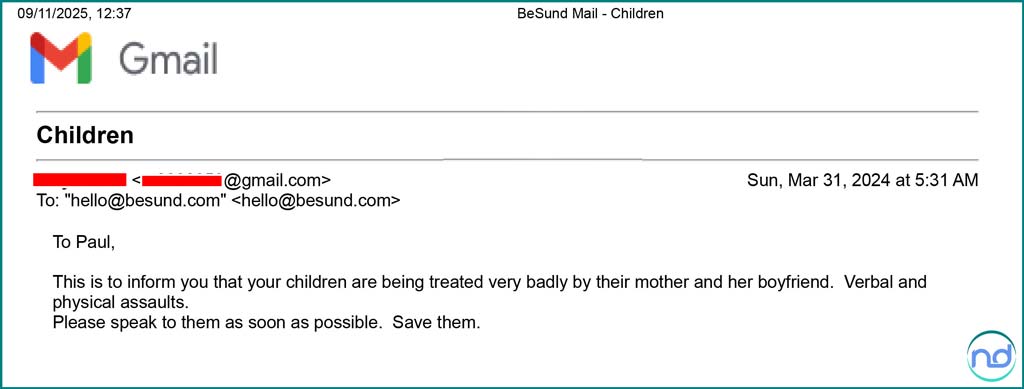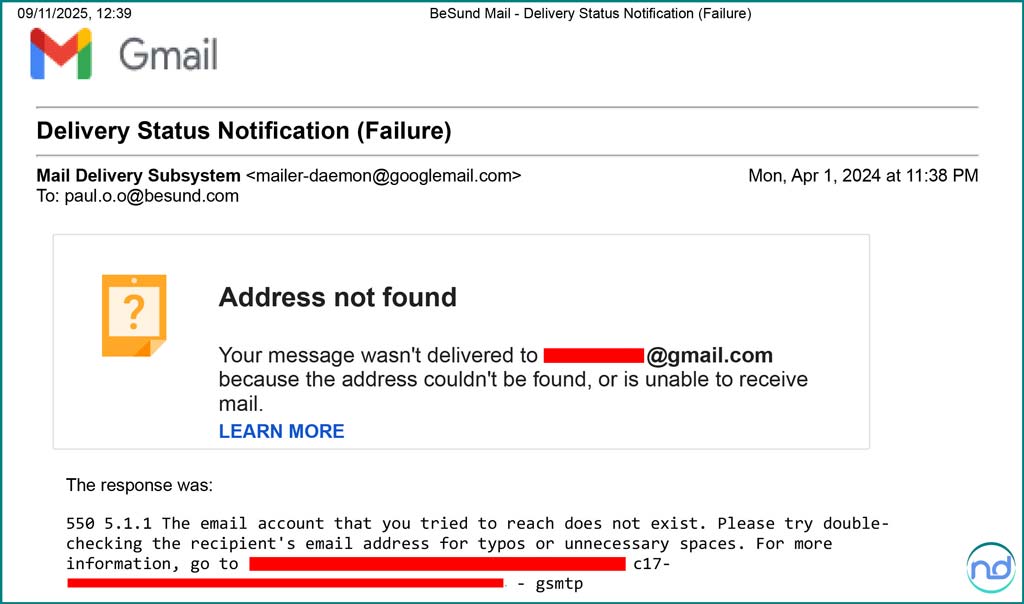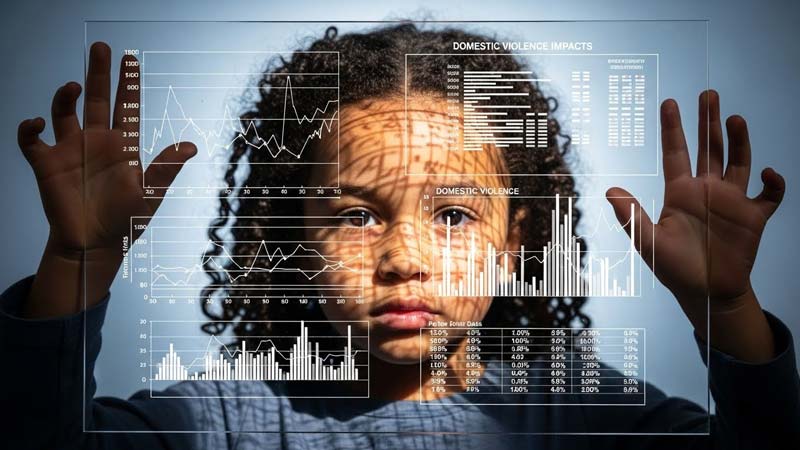Mother abusing British children becomes undeniable when an anonymous witness tracks down a barely-launched website to deliver a warning no father should receive. The email arrived on 31st March 2024 at 6:31 AM, sent to my BeSund site that I’d only set up weeks earlier.
Not my Nursing Daddy blog running since 2015. Not the prominent place anyone searching my name would find. Someone with direct knowledge of abuse hunted down a website that wasn’t even properly indexed yet.
Before reading further, listen to Sara Talia’s own words when confronted about trauma:
Keep her defensive denial in mind as you discover what she’s hiding.
This follows my previous documentation of her father’s racist assault against my 11-year-old son recovering from surgery. That attack happened because Sara abandoned them in Sweden whilst she holidayed in Morocco with her domestic abuser boyfriend.
Now you’ll see the anonymous warning that confirmed everything. The Garmin data shows my body’s collapse. Sara’s audio defending a documented violent abuser. My eldest son’s WhatsApp confession about ongoing abuse. The science on the impact of domestic violence.
Most importantly, a woman who knows exactly what she’s doing whilst claiming innocence. These are the ages when trauma occurred:
Children’s Ages When Trauma Occurred
Remember these ages. A 12-year-old boy, a 9-year-old girl, and a 7-year-old boy subjected to mother abusing British children alongside her violent boyfriend.
The Anonymous Warning: Evidence of Mother Abusing British Children
The email subject line read: “Children,” see below:

“Your children are being treated very badly by their mother and her boyfriend. Verbal and physical assaults. Please speak to them as soon as possible. Save them.”
I discovered it two days later, 2nd April 2024, at 12:38 AM. My immediate response shows the panic:

I tried everything. Asked who they were. Begged for details. My reply bounced back:

Address not found. They’d used a disposable email to risk everything and warn me, then disappeared.
Someone witnessed a mother abusing British children seriously enough to track down a website that barely existed. They specifically mentioned BOTH Sara AND her boyfriend. They stayed anonymous, likely fearing retaliation from Mohcine, who has Qatari military connections.
This wasn’t the first warning I’d received.
Three months earlier, on 17th December 2023, my eldest son broke the over a month of silence since his last contact on 9th November 2023. What he sent confirms everything:

An 11-year-old boy used the word “abuses.” Not “mean” or “strict” or “annoying.” He chose “abuses”: a loaded word carrying weight no child that age typically uses. The anonymous email used “assaults.” Both words signal something far beyond normal conflict.
My son’s message reveals psychological manipulation at its worst. Nora supports her abuser despite his abusing her. Stockholm Syndrome doesn’t develop overnight in a 9-year-old girl. It requires sustained psychological pressure that breaks down resistance.
I knew about Mohcine’s violence before this email arrived. His ex-partner contacted me in early 2022, documenting his brutal attacks. She sent photos of injuries from being kicked off her bike and dragged from her car. Medical reports confirmed physical assault. Police reports mysteriously disappeared despite documented evidence.
Sara knows all of this. When the ex-partner initially pressed charges, Sara was arrested. She spent over 12 hours in a cell, desperately contacting people outside to plead with her ex-partner to drop charges against her. The nanny confirmed that Sara was in a distressed state when released.
The ex-partner eventually dropped charges, not for Sara’s sake after Sara’s nastiness towards her during that period, but for my children’s sake. Then Sara moved this violent man into my children’s home.
The anonymous email wasn’t speculation. It was confirmation from someone who’d directly witnessed ongoing abuse, or perhaps someone in whom the children had confided their suffering. Either way, the warning came from knowledge of real harm.
The Physiological Collapse: When Child Abuse Discovery Destroys a Father
My body recorded everything. The data below documents the biological cost of discovering your children face abuse whilst lacking resources to protect them:
Baseline stress averaged 19-28 on 30-31 March 2024. Normal range for someone managing depression through walking, running, meditation, and breathing exercises.
Then the email arrived. Stress climbed steadily through late April. Peak hit 52 on 30th April. The crisis zone lasted from 29th April to 10th May, with readings staying dangerously elevated.
The stress readings tell only part of the story. What happened to my sleep patterns reveals the full destruction of discovering a mother abusing British children; you cannot protect them.
The target sleep window of 11 PM to 7 AM became impossible. Bedtimes ranged chaotically from 8:41 PM to 5:09 AM. Predominantly poor-quality sleep despite adequate duration. Frequent awakenings. Heart palpitations. Chest tightness. Nightmares became nightly occurrences.
Recovery required over 30 days of strict routines before sleep quality improved to “Good” ratings in late May.
Mental health experts often assess patients during brief 15-minute evaluations. They ask about sleep quality. They check stress levels. They make judgments based on snapshots.
This data demonstrates what experts cannot assess through brief encounters. The invisible physiological cost of acute parental trauma. The measurable destruction occurs when you discover your children face verbal and physical assaults, but lack the resources to protect them.
I tried getting help. Contacted British authorities on 29th May 2024, two months after receiving the anonymous warning. I spent those weeks shattered, trying to process what to do.
The British authorities reviewed my situation. Sara had used international law to obtain full custody behind my back. They told me she had legal rights to work in Qatar, which gave her advantages I couldn’t challenge. They suggested contacting the Qatar authorities.
I refused. Mohcine has military connections there. Sara has contacts through her medical work. The same system that let her get a divorce in months (a process taking over a year in the UK) wouldn’t help me challenge her abuse of my children.
They suggested getting lawyers. I consulted UK legal teams. They confirmed I had a strong case. They quoted £35,000 to £45,000 to see it through.
I don’t have that money.
Around this time, I was struggling so badly that I wrote about Rishi Sunak’s approach to mental health. The then-Prime Minister wanted to cancel benefits for those with mental health issues. I challenged the nation’s assumption that experts could easily identify genuine cases.
Little did readers know my “bad news about the kids” was this anonymous tip-off about physical and verbal assaults. I embedded that hidden truth inside a political post to demonstrate how invisible mental health damage truly is.
My Garmin readings prove what I couldn’t articulate. The weeks of crisis. The sleep destruction. The physiological collapse that experts would never detect in brief evaluations.
This is what happens when a mother abusing British children destroys a father who lacks the money to fight back through proper legal channels.
When Mother Abusing British Children Becomes Defended and Denied
Sara portrays Mohcine as respectful. Listen to her own words:
She claims he “doesn’t impose himself on the children” and is “very respectful.” She insists he’s never in their face, only around when they’re not there.
Her lies are documented. My eldest son’s WhatsApp message confirms Mohcine abuses Nora and is horrible to both brothers. The anonymous email specifically states “verbal and physical assaults” from the mother AND her boyfriend.
Sara dismisses witnesses who report safeguarding concerns. Listen to her aggressive response:
She attacks compound residents who reported concerns back to me. “Who are they? Are they my parents? Who are these people on the compound that reports back to you? If I was in your situation, I would just tell them, fuck off.”
The anonymous email confirmed those compound residents were right to report what they witnessed.
Sara’s denial extends to claiming Mohcine’s ex-partner exaggerated the abuse. I’ve seen the photographs. Bruising on her inner leg from being pushed off her bike. Injuries where he dragged her from the car. Medical reports documented the violence.
Sara was arrested when the ex-partner initially pressed charges. She was held in a cell for over 12 hours. She contacted multiple people, pleading with the ex-partner not to press charges. The nanny confirmed this when I questioned her. Sara was in a distressed state when released.
The ex-partner didn’t drop charges for Sara. She did it for my kids, despite Sara’s nastiness towards her during that period.
My daughter consistently asks how I know what’s going on in the house. She’s either worried about the situation or her mother’s asking her to find out my sources. I believe both things are true. Sara has interrogated them multiple times, trying to identify who’s reporting her behaviour.
The reason I know Sara has asked them to question me is revealing. When I returned to the UK with my tail tacked between my legs, I kept receiving calls and text messages from the handymen and gardeners I was close to whilst living in Qatar. I never read the messages or picked up. Only after about half a year, when my daughter mentioned that mum thinks the handymen and gardeners are telling me things, did it click.
Sara had gone to management and reported it. They were getting into trouble, which is why they contacted me. She would have reported it to the estate agent, who, I believe, is the third person she cheated on me with.
When they moved from the compound, my daughter repeatedly said I wouldn’t know what’s happening anymore because I don’t know anyone at the new location. The frequency and concern in her voice revealed something deeper she couldn’t articulate.
Sara coaches the kids to lie. Lie to me. Lie to school counsellors. Lie about her boyfriend living with them. She threatens them, saying she’ll be arrested if they tell the truth. My kids delete messages in terror, asking me to delete evidence of our conversations.
I’ve had extensive conversations with my children where they’re scared to speak freely. Particularly my daughter, who sends cryptic messages via Google Meet, then asks me to delete everything. I’ve deleted most evidence at their request. I only work with facts I can prove, not Chinese whispers.
My eldest son, who was initially balanced, now fully supports his mother’s actions. He lies to me constantly. When they visited, my daughter and youngest son told me what they’d experienced, and he was upset with them for breaking the silence. His mother clearly has an arrangement with him. I assume he gets what he wants if he keeps the others in line.
Yet out of nowhere, this boy who supports his mother 100% sent that WhatsApp message confirming abuse. The same boy who hadn’t contacted me for over a month suddenly broke the silence on 17th December 2023.
An 11-year-old selecting the word “abuses” carries immense weight. Adults understand that the word encompasses physical abuse, emotional abuse, and other forms that children struggle to articulate. My daughter has become so scared that she supports her abuser. The unsaid carries as much weight as what’s spoken when children describe their circumstances using such loaded language.
Sara caps on social media, acting like a single parent doing a good job. That’s pure capping born out of fantasy. I wrote about single parents deserving recognition back in 2015 after realising how hard parenting alone truly is. Sara isn’t that person.
She’s never been a mother. I did all-night sessions when the kids had colic. I taught them to walk and ride bikes. I taught them to read and write, as well as maths and spelling. I taught them sports, singing, and piano. Everyone knows this, even her friends who stand in her corner pretending they saw nothing.
Sara speaks Swedish and Algerian Arabic, yet never taught her kids either language. She put my eldest son in Swedish lessons, so he’s the best of the three. My daughter knows less. My youngest knows very little. The laws of diminishing returns, as more kids came along, prove how useless she truly is.
This woman stole my children’s future. Her inability to educate the kids or support their natural abilities to shine has stolen everything they could have become. I was willing to forgive her for the first cheating discovered when I found the iPad with images of her with the black receptionist from Urgent Care Croydon, for the kids’ sake, against my better judgment. I don’t believe in staying with cheaters, but that changes when you have children. I truly hate this woman.
Pretending I was cool with her cheating to keep my kids’ future safe, then discovering she cheated again, makes me wonder how many other men there were. Getting the divorce behind my back to steal my kids? There’s no coming back from that. I’m burning this house down.
If you back a cat into a corner, you create a tiger. When she cheated, I could forgive because I put the kids above personal interests. But stealing my kids? Man, I saw red.
Acting like a villain today, playing victim tomorrow. That’s her game. She claims she’s a woman treated like a child, whilst subjecting children to documented abuse. A villain in a victim’s clothing, a devil wrapped in sheep’s wool, spinning lies whilst reality burns around her. This pattern of the mother abusing British children continues because she faces no consequences for her actions.

The Science Behind Family Violence and Domestic Abuse Impact
Research confirms what the anonymous email warned about. Exposure to multiple adverse childhood experiences, including family violence, significantly increases violence victimisation. Children facing these experiences show over seven times greater odds of becoming victims later in life, and over eight times greater odds of perpetrating violence themselves.
When children witness intimate partner violence against female caregivers, it represents significant childhood trauma impacting development. The effects aren’t limited to immediate emotional distress. Growing up in domestic violence environments creates lasting impacts on health outcomes extending into adulthood.
Globally, approximately one in three women who have been in relationships experience intimate partner violence. Many incidents occur in households with children, creating well-established harmful effects on development. Studies tracking children over time show consistent associations between exposure to intimate partner violence and adjustment problems.
Children exposed to domestic violence demonstrate physiological differences in emotional regulation compared to non-exposed children. Exposed children show smaller increases in baseline vagal tone (a measure of the nervous system’s ability to regulate stress), suggesting less adaptive development of regulatory functioning over time.
The comprehensive effects of childhood trauma and its lifelong impact extend far beyond immediate physical harm. Multiple studies document that family dysfunction, including domestic violence, leads to various health impacts and increased tension throughout affected individuals’ lives.
Domestic violence significantly affects child development in measurable ways. A twin study controlling for shared genetics demonstrated that domestic violence exposure was associated with lower IQ scores. Exposed children showed a mean intelligence score 8 points lower than their non-exposed counterparts.
Exposure to domestic violence and related adverse childhood experiences tends to be kept secret, unrecognised by the outside world. This creates invisible but significant developmental impacts. Healthcare professionals identify domestic tension within households as a significant traumatic experience, often coexisting with other traumatic experiences and creating complex harm patterns.
Domestic tension creates cycles of adverse effects. Women experiencing domestic violence during pregnancy face increased risks of physical injuries, substance use, and pregnancy complications. Exposure to intimate partner violence in children is identified when they witness verbal abuse between parents six or more times, or physical abuse three or more times.
For every fatal child maltreatment case, thousands suffer non-fatal maltreatment, much of which goes unreported. Between 2009 and 2010 in England, there were 62 child maltreatment fatalities and 43,700 substantiated cases through child protection data.
In the United Kingdom, 2.5% of children under 11 years and 6.0% aged 11-17 experienced physical, sexual, or emotional abuse or neglect in the previous year. These percentages indicated child maltreatment was 7 to 17 times more common than official reports suggested. The pattern of mother abusing British children alongside violent partners represents part of this hidden epidemic.
Repeated or prolonged stress experiences render adults with childhood trauma vulnerable to stress-related disorders. Mechanisms may involve persistent stress-related neurophysiological patterns: chronically elevated catecholamines (stress hormones) and heightened hypothalamic-pituitary-adrenal axis activity (the body’s central stress response system), resulting in increased stress reactivity throughout life.
Research indicates that exposure to violence, whether direct or indirect, leads to detrimental consequences immediately and over extended periods. Studies show that less physical violence occurs in families with strong unity, whilst higher levels appear in high-conflict families.
The impact of familial violence extends across generations. Studies show strong associations between physical and emotional abuse, neglect, familial violence, and other child abuse affecting future generations.
Witnessing parental violence during childhood is linked to significant mental health and substance use problems throughout life. Impact can vary by gender, with some studies showing stronger associations between witnessing interpersonal violence and alcohol use disorders among females.
The direction of violence, particularly father-figure towards mother-figure violence, influences behavioural outcomes and attitudes regarding gender and violence in exposed children.

When Villains Act Like Victims: The Truth Children Will Expose
Listen again to Sara Talia’s voice when confronted about causing trauma:
“What am I, am I killing my children?” Her defensive denial stands in the face of overwhelming evidence. Judge for yourself whether this woman systematically causes childhood trauma through selfish choices.
Remember the ages:
Children’s Ages When Trauma Occurred
A 12-year-old boy. A 9-year-old girl. A 7-year-old boy.
Children watch everything, even when adults believe they’re too young to understand. Parents consistently underestimate children’s awareness and long-term memory of traumatic events. Children eventually develop their own voices, as Eminem’s testimony about his childhood demonstrates.
Sara can coach them to lie now. Manipulate their memories. Control their narratives. They’ll remember everything as they mature and develop, thinking that questions what they’ve been told.
Very easy for those who are not experiencing pain and betrayal to speak of forgiveness and moving on. This cannot happen when there’s no justice. My GOAT dad told me two weeks back to forget and move on. My beloved daughter, following her mother’s orders after my first trauma post on her grandfather physically and racially abusing my eldest son, called, using emotional tactics to let things go.
My GOAT dad just lost his influence over me. He’s joined the long list of those who believe heinous actions and law-breaking should go without justice. My mother lost her influence two years ago. My daughter, with whom I share such a bond, showed her hand: willing to stand on the side of lies and injustice.
Whilst I don’t believe these are her words, I no longer have kids I trust. Morality has seeped out. This level of suffering, pain, and profound sadness accompanies each breath. No human, especially those who’ve done nothing wrong, should carry this burden.
For me, there’s only one thing left. Ensuring facts and truth emerge, so my kids, once they step away from indoctrination and the psychological control their nasty, evil mother subjects them to, cannot deny the truth. Sara’s from Sweden, and even lived in Stockholm, but that doesn’t give her special rights to Stockholm Syndrome to my children into submission.
I will not be that guy. The guy society says, “black men run away from parenting responsibilities.” That guy where mixed-race kids grow up hating their black dad. That’s not me.
I was the pussy that lay there to be treated like shit. Sara Talia thought I was her ladyboy that she could speak to and treat as she wanted. I was protecting my kids. Now I have no kids (this sounds harsh, but it’s a fact). They’ve placed their flags in the nasty, evil woman’s corner.
I will not let anything block facts and truth. That’s all I have left. Should I pass away, this narcissistic, Machiavellian, evil woman cannot cement her lies.
I am not a negative statistic. I am a positive statistic. I am a plus one.
Sara was brazen when she told me my penis was smaller than the first guy she had cheated with. Her disdain for me, her infantilisation of me, leaves no stain. I’m comfortable with my tool. According to published data, I’m above average. I even checked—sad, I know—but curiosity won. My Black & Decker tool worked extremely well: two kids on the first attempt, one on the second. Not shabby for a dude with a small Tinky Winky.
I hold no issue with any of the guys she cheated with. I hold her accountable. This Pandora she opened has no closing. She should charge it to the game. She claims I got played. Then charge the open box to the game. Plans of the diligent lead to success as surely as haste leads to failure.
She thought she was emasculating me. Nah, not me, bro. Through dyslexia, I’m comfortable with who and what I am. I don’t compare or compete. Sorry, sis, you got the wrong guy.
I have extensive spoken evidence with the kids that I don’t mention because I cannot show proof. There’s no way I’d fabricate anything. Unlike America, where proving defamation is hard due to free speech protections, in Europe, it’s easy to win defamation cases.
If anything I’ve written about Sara is false, she could sue me here in the UK. The fact that she doesn’t take this route speaks volumes. She knows what she’s done and doesn’t want to open that can of worms. Her illegal acts to obtain the fake divorce in Qatar, what comes out about how she treats the children, all of it would surface. I’m laying down the gauntlet, showing readers I’m open to being sued. She won’t do it because the truth is my defence.
The choice was always entirely hers. Protect vulnerable children or enable her violent boyfriend’s access to them. Shield kids from documented domestic abuse or shield their abusive partner from consequences. She chose the abuser over the victims.
Personal comfort over children’s fundamental safety. Actively complicit in exposing her own children to a man whose violence against women is documented with medical evidence and police reports.
Sara Talia built this nightmare through calculated choices. Moving Mohcine into their home despite knowing his history. Coaching children to lie about his presence. Threatening them with her arrest if they speak the truth.
Dismissing witnesses who report safeguarding concerns. Defending him as “respectful” whilst anonymous observers risk everything to warn that the mother abusing British children continues unchecked.
History will remember her choices with brutal clarity. More importantly, her children will remember too. Every lie she told them. Every time she prioritised her violent boyfriend over their safety. Every moment, she forced them to live in fear whilst pretending to be the mother of the year on social media.
She should keep flexing and flossing on Insta and Facebook; she is both a contributor and an assister of abuse, the kids are watching, even when she thinks they’re too young to understand. One day, they’ll have their voice. And very soon she will answer to the law.
Sources
- Anda, Robert F., Vincent J. Felitti, J. Douglas Bremner, John D. Walker, Charles Whitfield, Bruce D. Perry, Shanta R. Dube, and Wayne H. Giles. “The enduring effects of abuse and related adverse experiences in childhood. A convergence of evidence from neurobiology and epidemiology.” European Archives of Psychiatry and Clinical Neuroscience 256, no. 3 (2006): 174-186.
- Boynton-Jarrett, Renée, Jocelyn Fargnoli, Sarah F. Suglia, Barry Zuckerman, and Rosalind J. Wright. “Association between maternal intimate partner violence and incident obesity in preschool-aged children: results from the Fragile Families and Child Well-being Study.” Archives of Pediatrics & Adolescent Medicine 164, no. 6 (2010): 540–546.
- Dong, Maxia, Wayne H. Giles, Vincent J. Felitti, Shanta R. Dube, Janice E. Williams, Daniel P. Chapman, and Robert F. Anda. “Insights into causal pathways for ischemic heart disease: adverse childhood experiences study.” Circulation 110 (2004): 1761-1766.
- Garcia-Moreno, Claudia, Christina Pallitto, Karen Devries, Heidi Stockl, Charlotte Watts, and Naeemah Abrahams. “Global and regional estimates of violence against women: prevalence and health effects of intimate partner violence and non-partner sexual violence.” World Health Organization (2013).
- Hedin, Lotta Wiklund, and Per Olof Janson. “Domestic violence during pregnancy: the prevalence of physical injuries, substance use, abortions and miscarriages.” Acta Obstetricia et Gynecologica Scandinavica 79 (2000): 625-630.
- Howell, Kathryn H., Sandra E. Barnes, Laura E. Miller, and Sandra A. Graham-Bermann. “Developmental variations in the impact of intimate partner violence exposure during childhood.” Journal of Injury and Violence Research 8 (2014): 43–57.
- Jun, Hee-Jin, Heather L. Corliss, Renée Boynton-Jarrett, Donna Spiegelman, S. Bryn Austin, and Rosalind J. Wright. “Growing up in a domestic violence environment: relationship with developmental trajectories of body mass index during adolescence into young adulthood.” Journal of Epidemiology and Community Health 66, no. 7 (2012): 629.
- Koenen, Karestan C., Terrie E. Moffitt, Avshalom Caspi, Alan Taylor, and Shaun Purcell. “Domestic violence is associated with environmental suppression of IQ in young children.” Development and Psychopathology 15, no. 2 (2003): 297–311.
- Otte, Christian, Thomas C. Neylan, Nnamdi Pole, Thomas Metzler, Shannon Best, Clare Henn-Haase, and Charles R. Marmar. “Association between childhood trauma and catecholamine response to psychological stress in police academy recruits.” Biological Psychiatry 57, no. 1 (2005): 27-32.
- Perry, Bruce D., and Ronnie Pollard. “Homeostasis, stress, trauma, and adaptation. A neurodevelopmental view of childhood trauma.” Child and Adolescent Psychiatric Clinics of North America 7 (1998): 33–51.
- Radford, Lorraine, Susana Corral, Christine Bradley, and Helen L. Fisher. “The prevalence and impact of child maltreatment and other types of victimisation in the UK: findings from a population survey of caregivers, children and young people and young adults.” Child Abuse & Neglect 37, no. 10 (2013): 801–13.
- Rigterink, Tamara, Kathryn L. Fainsilber, and David M. Hessler. “Domestic violence and longitudinal associations with children’s physiological regulation abilities.” Journal of Interpersonal Violence (2010).
- Rivara, Frederick, and Suzanne Le Menestrel. “Preventing Bullying: Through Science, Policy and Practice.” Washington, DC: The National Academic Press (2016).
- Sidebotham, Peter, Marian Brandon, Sue Bailey, Pippa Belderson, and Caroline Hawley. “Serious and fatal child maltreatment: setting serious case review data in context with other data on violent and maltreatment-related deaths in 2009-10.” London: Department for Education (2011).
- Tanaka, Miya, Christine Wekerle, Emily Leung, Randall Waechter, Andrea Gonzalez, Ellen Jamieson, and Harriet L. MacMillan. “Preliminary evaluation of the childhood experiences of violence questionnaire short form.” Journal of Interpersonal Violence 27, no. 2 (2012): 396–407.
- Temple, Jeff R., Ryan C. Shorey, Sara R. Tortolero, David A. Wolfe, and Gregory L. Stuart. “Importance of gender and attitudes about violence in the relationship between exposure to interparental violence and the perpetration of teen dating violence.” Child Abuse & Neglect 37 (2013): 343–352.
- Vu, Nguyen L., Ernest N. Jouriles, Renee McDonald, and David Rosenfield. “Children’s exposure to intimate partner violence: a meta-analysis of longitudinal associations with child adjustment problems.” Clinical Psychology Review 46 (2016): 25–33.
- Watts, Nick, Markus Amann, Nigel Arnell, et al. “The 2020 report of the Lancet countdown on health and climate change: responding to converging crises.” Lancet 397 (2021): 129-70.
- Wittbrodt, Matthew T., Kasra Moazzami, Bruno B. Lima, Zakaria S. Alam, Dayna Corry, Muhammad Hammadah, Cristhian Campanella, Leslee Ward, Arshed A. Quyyumi, Amit J. Shah, et al. “Early childhood trauma alters neurological responses to mental stress in patients with coronary artery disease.” Journal of Affective Disorders 254 (2019): 49–58.

